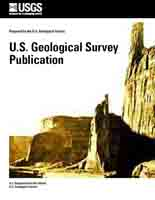Effects of habitat characteristics and water quality on macroinvertebrate communities along the Neversink River in southeastern New York, 1991-2001
Links
- More information: USGS Index Page (html)
- NGMDB Index Page: National Geologic Map Database Index Page (html)
- Download citation as: RIS | Dublin Core
Abstract
The Neversink River, in the Catskill Mountains of southeastern New York State, feeds the Neversink Reservoir, which diverts 85 percent of the river’s flow to New York City. Acidification of several headwater reaches has affected macroinvertebrate assemblages throughout the river system above the reservoir, and the alteration of flow conditions below the reservoir dam has affected macroinvertebrate assemblages for at least 10 kilometers downstream from the reservoir. In 1999, the U.S. Geological Survey, in cooperation with The Nature Conservancy, compiled data from 30 stream reaches to quantify the effects of acidification and of the reservoir on the structure and function of macroinvertebrate assemblages throughout the Neversink River.
Acidic headwater reaches supported greater numbers of acid-tolerant chironomid taxa and fewer numbers of acid-sensitive Ephemeroptera and Trichoptera than neutral reaches, and fewer scraper individuals and more shredder individuals. The 14 reaches below the reservoir, with sharply decreased flows and altered flow patterns compared to reaches above the reservoir, supported more Chironomidae and fewer Ephemeroptera and Trichoptera than the upper reaches; they also had greater numbers of shredder individuals and fewer scraper and filterer individuals than reaches above the reservoir. Water-quality variables such as pH and aluminum concentration appear to have affected macroinvertebrate assemblages more strongly in the headwaters than below the reservoir, whereas physical-habitat variables such as mean channel width and water temperature have affected these assemblages more strongly downstream from the reservoir than in the headwaters. The water-quality changes due to acidification, combined with the decreased flows and lowered water temperatures below the reservoir, have disrupted downstream continuum of macroinvertebrate communities that would normally be observed from the headwaters to the mouth. The information presented herein provides a basis for further evaluation of the Neversink and similar river systems, and for assessment of the effectiveness of future conservation efforts.
Study Area
| Publication type | Report |
|---|---|
| Publication Subtype | USGS Numbered Series |
| Title | Effects of habitat characteristics and water quality on macroinvertebrate communities along the Neversink River in southeastern New York, 1991-2001 |
| Series title | Scientific Investigations Report |
| Series number | 2008-5024 |
| ISBN | 9781411321618 |
| DOI | 10.3133/sir20085024 |
| Year Published | 2008 |
| Language | English |
| Publisher | U.S. Geological Survey |
| Contributing office(s) | National Research Program - Western Branch, New York Water Science Center |
| Description | iv, 17 p. |
| Time Range Start | 1991-01-01 |
| Time Range End | 2001-12-31 |
| Country | United States |
| State | New York |
| Other Geospatial | Neversink River |


